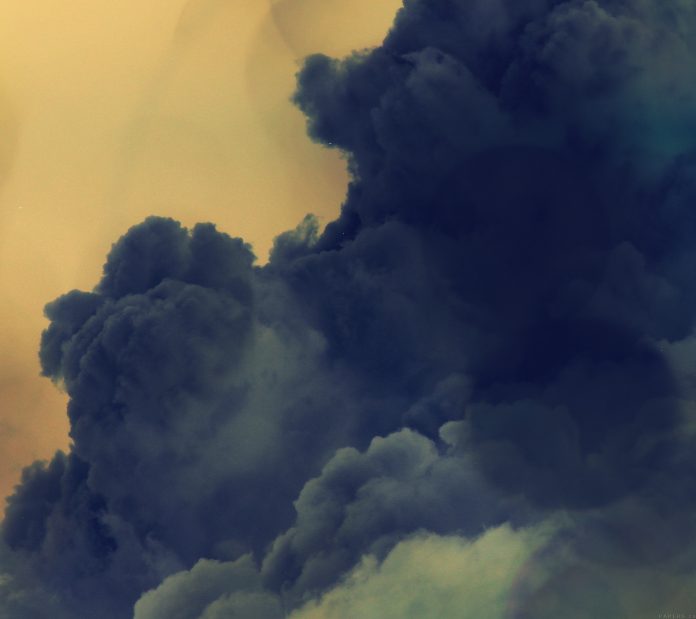Face Alignment is the technique in which the image of the person is rotated according to the angle of the eyes. This technique is actually used as a part of the pipeline process in which facial detection is done using the image. This implementation of face alignment can be easily done with the help of python module cv2(computer vision). It has so many features included in it.
Suppose if the person’s eyes in the image are at an x angle (x!=180 degrees) with reference to the frame of the image then this technique will rotate the image according to the angle where the x angle will be equal to 180 degrees with reference to the image frame.

Original image and Referenced frame
Now the angle x can be easily calculated from the triangle formed by the eyes and the referenced frame using trigonometry. By applying the Euclidean distance we can get the value of the angle x.
cos(x) = (b2+ c2– a2 ) / (2bc)

Trigonometry for calculating the angle x
Steps required for Face Alignment
Step 1: First we need to detect the face in the image.
Python3
# Face detection function to # detect the face and return imagesdef face_detection(img): faces = face_detector.detectMultiScale(img, 1.1, 4) if (len(faces) <= 0): img_gray = cv2.cvtColor(img, cv2.COLOR_BGR2GRAY) return img, img_gray else: X, Y, W, H = faces[0] img = img[int(Y):int(Y+H), int(X):int(X+W)] return img, cv2.cvtColor(img, cv2.COLOR_BGR2BGRA) |
Step 2: Then we need to find the largest pair of eyes in the referenced image.
Python3
# finding the largest pair of# eyes in the imageif len(eyes) >= 2: eye = eyes[:, 2] container1 = [] for i in range(0, len(eye)): container = (eye[i], i) container1.append(container) df = pd.DataFrame(container1, columns=[ "length", "idx"]).sort_values(by=['length']) eyes = eyes[df.idx.values[0:2]] |
Step 3: Capturing the eyes.
Python3
# center of right eyeright_eye_center = ( int(right_eye[0] + (right_eye[2]/2)), int(right_eye[1] + (right_eye[3]/2)))right_eye_x = right_eye_center[0]right_eye_y = right_eye_center[1]cv2.circle(img, right_eye_center, 2, (255, 0, 0), 3)# center of left eyeleft_eye_center = ( int(left_eye[0] + (left_eye[2] / 2)), int(left_eye[1] + (left_eye[3] / 2)))left_eye_x = left_eye_center[0]left_eye_y = left_eye_center[1]cv2.circle(img, left_eye_center, 2, (255, 0, 0), 3)# finding rotation directionif left_eye_y > right_eye_y: print("Rotate image to clock direction") point_3rd = (right_eye_x, left_eye_y) direction = -1 # rotate image direction to clockelse: print("Rotate to inverse clock direction") point_3rd = (left_eye_x, right_eye_y) direction = 1 # rotate inverse direction of clock |
Step 4: Using trigonometry to calculate the length of all the edges of the triangle formed.
Python3
# Calculate the length of all the edges def trignometry_for_distance(a, b): return math.sqrt(((b[0] - a[0]) * (b[0] - a[0])) \ + ((b[1] - a[1]) * (b[1] - a[1]))) |
Step 5: Now we will calculate the angle x as discussed in the above example.
Python3
# calculating the angle between a, b, ccv2.circle(img, point_3rd, 2, (255, 0, 0), 2)a = trignometry_for_distance(left_eye_center, point_3rd)b = trignometry_for_distance(right_eye_center, point_3rd)c = trignometry_for_distance(right_eye_center, left_eye_center)cos_a = (b*b + c*c - a*a)/(2*b*c)angle = (np.arccos(cos_a) * 180) / math.pi |
Step 6: Rotate the image according to the referenced frame of the image.
Python3
# rotate imagesnew_img = Image.fromarray(img_raw)new_img = np.array(new_img.rotate(direction * angle)) |
Step 7: At last scale the image to see the face image.
Python3
# scale the imagetest_set = ["pic.png"]for i in test_set: alignedFace = Face_Alignment(i) pl.imshow(alignedFace[:, :, ::-1]) pl.show() img, gray_img = face_detection(alignedFace) pl.imshow(img[:, :, ::-1]) pl.show() |
Below is the complete Implementation
Python3
# install and import above modules firstimport osimport cv2import mathimport matplotlib.pyplot as plimport pandas as pdfrom PIL import Imageimport numpy as np# Detect facedef face_detection(img): faces = face_detector.detectMultiScale(img, 1.1, 4) if (len(faces) <= 0): img_gray = cv2.cvtColor(img, cv2.COLOR_BGR2GRAY) return img, img_gray else: X, Y, W, H = faces[0] img = img[int(Y):int(Y+H), int(X):int(X+W)] return img, cv2.cvtColor(img, cv2.COLOR_BGR2BGRA)def trignometry_for_distance(a, b): return math.sqrt(((b[0] - a[0]) * (b[0] - a[0])) +\ ((b[1] - a[1]) * (b[1] - a[1])))# Find eyesdef Face_Alignment(img_path): pl.imshow(cv2.imread(img_path)[:, :, ::-1]) pl.show() img_raw = cv2.imread(img_path).copy() img, gray_img = face_detection(cv2.imread(img_path)) eyes = eye_detector.detectMultiScale(gray_img) # for multiple people in an image find the largest # pair of eyes if len(eyes) >= 2: eye = eyes[:, 2] container1 = [] for i in range(0, len(eye)): container = (eye[i], i) container1.append(container) df = pd.DataFrame(container1, columns=[ "length", "idx"]).sort_values(by=['length']) eyes = eyes[df.idx.values[0:2]] # deciding to choose left and right eye eye_1 = eyes[0] eye_2 = eyes[1] if eye_1[0] > eye_2[0]: left_eye = eye_2 right_eye = eye_1 else: left_eye = eye_1 right_eye = eye_2 # center of eyes # center of right eye right_eye_center = ( int(right_eye[0] + (right_eye[2]/2)), int(right_eye[1] + (right_eye[3]/2))) right_eye_x = right_eye_center[0] right_eye_y = right_eye_center[1] cv2.circle(img, right_eye_center, 2, (255, 0, 0), 3) # center of left eye left_eye_center = ( int(left_eye[0] + (left_eye[2] / 2)), int(left_eye[1] + (left_eye[3] / 2))) left_eye_x = left_eye_center[0] left_eye_y = left_eye_center[1] cv2.circle(img, left_eye_center, 2, (255, 0, 0), 3) # finding rotation direction if left_eye_y > right_eye_y: print("Rotate image to clock direction") point_3rd = (right_eye_x, left_eye_y) direction = -1 # rotate image direction to clock else: print("Rotate to inverse clock direction") point_3rd = (left_eye_x, right_eye_y) direction = 1 # rotate inverse direction of clock cv2.circle(img, point_3rd, 2, (255, 0, 0), 2) a = trignometry_for_distance(left_eye_center, point_3rd) b = trignometry_for_distance(right_eye_center, point_3rd) c = trignometry_for_distance(right_eye_center, left_eye_center) cos_a = (b*b + c*c - a*a)/(2*b*c) angle = (np.arccos(cos_a) * 180) / math.pi if direction == -1: angle = 90 - angle else: angle = -(90-angle) # rotate image new_img = Image.fromarray(img_raw) new_img = np.array(new_img.rotate(direction * angle)) return new_imgopencv_home = cv2.__file__folders = opencv_home.split(os.path.sep)[0:-1]path = folders[0]for folder in folders[1:]: path = path + "/" + folderpath_for_face = path+"/data/haarcascade_frontalface_default.xml"path_for_eyes = path+"/data/haarcascade_eye.xml"path_for_nose = path+"/data/haarcascade_mcs_nose.xml"if os.path.isfile(path_for_face) != True: raise ValueError( "opencv is not installed pls install using pip install opencv ", detector_path, " violated.")face_detector = cv2.CascadeClassifier(path_for_face)eye_detector = cv2.CascadeClassifier(path_for_eyes)nose_detector = cv2.CascadeClassifier(path_for_nose)# Name of the image for face alignment if on # the other folder kindly paste the name of# the image with path includedtest_set = ["pic.png"]for i in test_set: alignedFace = Face_Alignment(i) pl.imshow(alignedFace[:, :, ::-1]) pl.show() img, gray_img = face_detection(alignedFace) pl.imshow(img[:, :, ::-1]) pl.show() |
Output:





